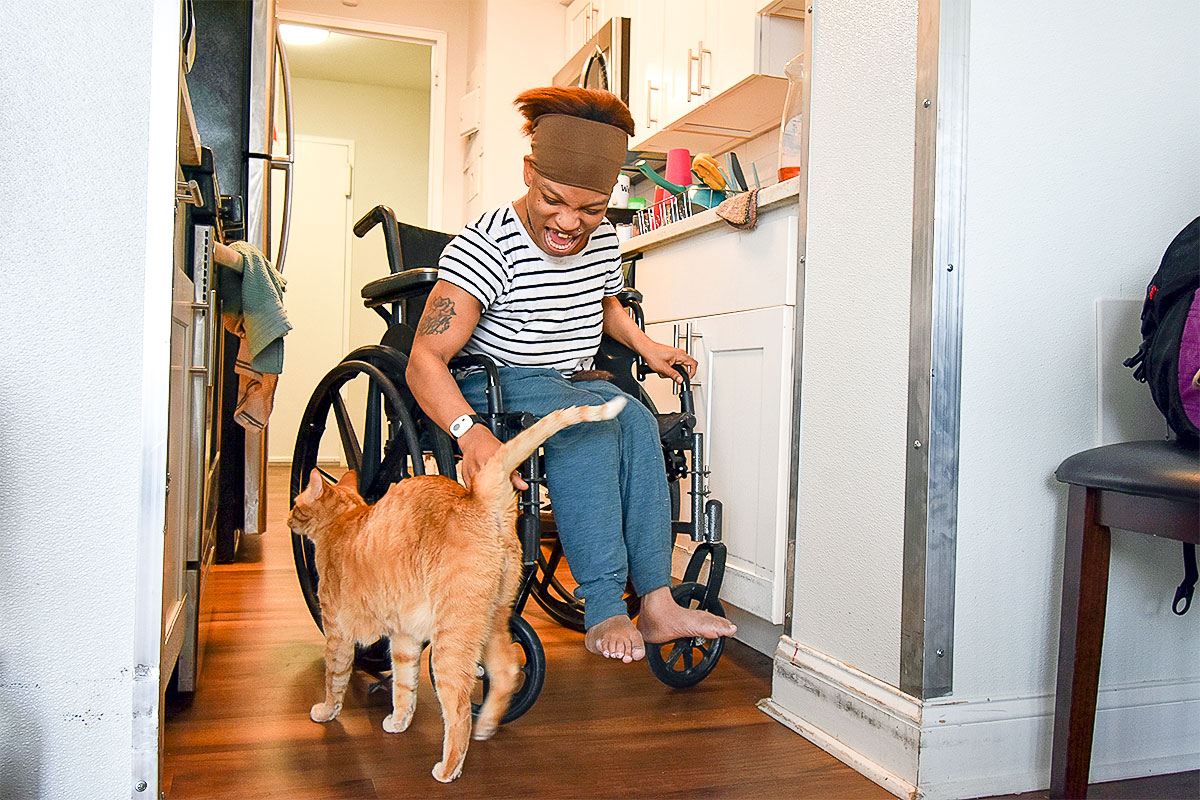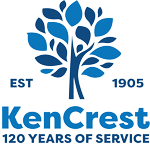
As a wheelchair user with an Intellectual Disability, Patricia McLean doesn’t let her disability stop her from independence.
By Sydney Kerelo
Pennsylvania resident Patricia McLean’s achieved a greater sense of independence with the help of KenCrest’s Supported Independent Living and Enabling Technology programs.
Three years ago, McLean moved into her first apartment by herself and was met with a slew of emotions. As a wheelchair user, she’s wanted to achieve independence for years but never felt she could until coming to KenCrest.

Patricia McLean and her cat Lucky // Photo by Aubrey Hoffert
As part of the Supported Independent Living program, the Agency helped McLean find an apartment and provided her with the proper resources to learn how to live independently. Working as a Data Entry Clerk at her local hospital, and has gained a greater sense of self. She still receives 16 to 20 hours a week of support from her program manager, Deidre Taylor, but she is more independent than ever.
With a bubbly personality and a passion for independence, McLean has come far since moving into her apartment. Before, she could not cook or clean for herself, but now, she cooks regularly and has adapted supports to help her clean, like her Roomba that vacuums and mops her floors regularly.
“It’s important for her that although she’s in a wheelchair, she can still be very independent,” says Taylor. “Her disability doesn’t stop her from doing anything she sets her mind to.”
McLean utilizes Enabling Technologies to help her with cooking, cleaning, and even her safety. She currently lives on the 14th floor of her apartment building, and if there were ever an emergency McLean faces difficulties exiting the building. But the Enabling Tech department was able to combat this by installing a fire system in her apartment that will alert others and help her leave the building if need be.
She also has an app on her phone that lets her turn her lights on and off and a watch that alerts her team members and family if there is an emergency. Taylor and the Enabling Tech department are currently working on installing a door opener for her apartment so that she can open it easily without banging into the wall.
RELATED:What Does Independence Mean to People with Disabilities?
One of Taylor’s favorite memories with McLean was during a difficult time when McLean’s electric wheelchair broke down for more than a month. Taylor got her a manual wheelchair for the time being, but McLean could not lift herself into her bed without assistance. So, she slept on the couch for a while and complained about back pain.
“She kept telling me how her back was hurting, so we worked together to find the best techniques to help her get into her bed,” says Taylor. “We worked together with a therapist from birth to five program, and she eventually pulled herself into her bed without assistance. Watching her gain that independence was my most memorable moment because we had waited so long for it to happen.”
Enabling Technologies, otherwise known as Assistive Technologies, is rapidly expanding with new products like Voiceitt, an innovation that translates for people with nontraditional speech, and the Eyedriveomatic, which lets someone in a wheelchair drive just by using their eyes, to name a few.
According to Hannah Herner, a writer for Disability Scoop, “Enabling Technology has also connected some with an app that helps the person navigate the transit system with verbal prompts. It’s all to help folks reach their goals toward independent living and, in some cases, employment.”
KenCrest’s Supported Independent Living and Enabling Technologies departments are consistently learning about new products and home ideas to best support the people we serve. As a Tech-First Accredited organization, KenCrest is dedicated to helping the people we support live fulfilling and independent lifestyles, no matter what that takes.
Learn more about our Enabling Technology and Supported Independent Living programs by clicking the links below.
